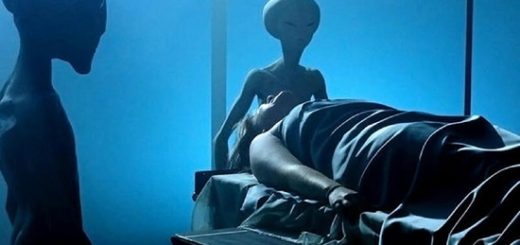Ancient manuscript claims Jesus Married and had children

Written evidence exists that suggests Jesus married Mary Magdalene and even had children. Furthermore, the ancient manuscript calls Joseph—just like Jesus— the Son of God.
Waiting to be rediscovered in the British Library is an ancient manuscript of the early Church, copied by an anonymous monk. The manuscript is at least 1,450 years old, possibly dating to the first century i.e., Jesus’ lifetime. And now, The Lost Gospel provides the first ever translation from Syriac into English of this unique document that tells the inside story of Jesus’ social, family and political life.
The Lost Gospel takes the reader on an unparalleled historical adventure through a paradigm-shifting manuscript. What the authors eventually discover is as astounding as it is surprising: the confirmation of Jesus’ marriage to Mary Magdalene; the names of their two children; the towering presence of Mary Magdalene; a previously unknown plot on Jesus’ life, 13 years prior to the crucifixion; an assassination attempt against Mary Magdalene and their children; Jesus’ connection to political figures at the highest level of the Roman Empire; and a religious movement that antedates that of Paul―the Church of Mary Magdalene. (source)
According to experts, Jesus was born around 5BC and was crucified around 30AD. However, many people believe the story of Jesus is far more fascinating than what the church has been willing to accept.
Interestingly, the biography of Jesus is filled with enigmas. IN fact, there little anyone knows about his early life. According to the Gospel of Luke (2:41–2:51), when Jesus was 12 he journeyed to Jerusalem with his parents to celebrate Passover. Everything else before that and until Jesus was thirty remains a profound enigma for scholars.
Authors of a new book titled the Lost Gospel firmly believe they have found evidence in an ancient manuscript that Jesus had TWO sons and married Mary.
While there have been a number of ‘lost gospels’ that have been discovered in the past, none of them have created such a buzz among scholars as this finding.
The ancient texts, believed to date back to 570 AD, was written in Syriac has been covered in dust, waiting in the archives in the British Library for the past 20 years.
Before arriving at the British Library, the ancient manuscript was acquired by the British Museum in 1847 from a dealer who claims to have obtained it from the ancient St. Macarius monastery in Egypt.
Even though the ancient manuscript has been studied in the past, it has been cataloged as unremarkable. However, that changed when Barrie Wilson, a professor of religious studies in Toronto and Simcha Jacobovici studied the ancient text.
After six years of analyzing it, they believe that they’ve uncovered a missing fifth gospel which tells the story of the life of Jesus and was supposedly written by evangelists Matthew, Mark, Luke, and John, in the 1st century AD.
If this discovery is accepted by the scientific community, it would become the greatest and most important revelation into the life of Jesus in nearly 2000 years.
Jacobovici claims that the ancient manuscript –which is composed of 29 chapters— is a copy of another 1st-century gospel and offers different insights on several parts of the Bible.
To make the sensational ‘discovery’ experts used hi-tech digital imaging to photograph the text 13 times after which the document was translated for the first time from Syriac into English.
The two researchers claim that Joseph was actually Jesus and that ‘Aseneth’ was in fact, Mary Magdalene.
The alleged translation of the ancient texts indicates that a Pharaoh of Egypt officiated at the wedding saying to Aseneth:
‘Blessed are you by the Lord God of Joseph, because he is the first-born of God, and you will be called the Daughter of God Most High and the bride of Joseph now and forever.’
Furthermore, the ancient texts allegedly read that after a seven-day wedding feast: ‘Joseph had intercourse with Aseneth . . . And Aseneth conceived from Joseph and gave birth to Manasseh and his brother Ephraim in Joseph’s house.’
However, similar claims have been made in the past.
Harvard professor Karen L. King indicates that she discovered an ancient papyrus fragment believed to have originated in ancient Egypt called the ‘Gospel of Jesus’ wife, written in Coptic reading:
‘Jesus said to them, “My wife . . .” ’
‘If you look at the cumulative evidence for Jesus’s marriage, it’s getting overwhelming,’ says Jacobovici. ‘This discovery is probably the most important piece.
‘Its provenance is known, sitting in the British Library all these years. It’s not crazy to say it’s a copy of a work from the first century — many scholars say it is. And it’s not nuts to say it’s Christian — as many scholars have said.’
However, nearly all Christian historians remain unconvinced concluding such claims are nothing but empty claims.
Diarmaid MacCulloch, professor of the history of the church at Oxford University
explains the ‘lost gospel’ claims sound ‘like the deepest bilge,’ adding: ‘I’m very surprised that the British Library gives these authors houseroom.’
Simcha Jacobovici and Barrie Wilson insist: ‘The only way there is no evidence is if you keep ignoring the evidence.’



 Creators of mankind
Creators of mankind Description of “Tall white aliens”
Description of “Tall white aliens” Where they came from?
Where they came from? About hostile civilizations
About hostile civilizations The war for the Earth
The war for the Earth “Tall white aliens” about eternal life
“Tall white aliens” about eternal life Video: “Nordic aliens”
Video: “Nordic aliens” Aliens
Aliens Alien encounters
Alien encounters The aliens base
The aliens base UFO
UFO Technology UFO
Technology UFO Underground civilization
Underground civilization Ancient alien artifacts
Ancient alien artifacts Military and UFO
Military and UFO Mysteries and hypotheses
Mysteries and hypotheses Scientific facts
Scientific facts


















